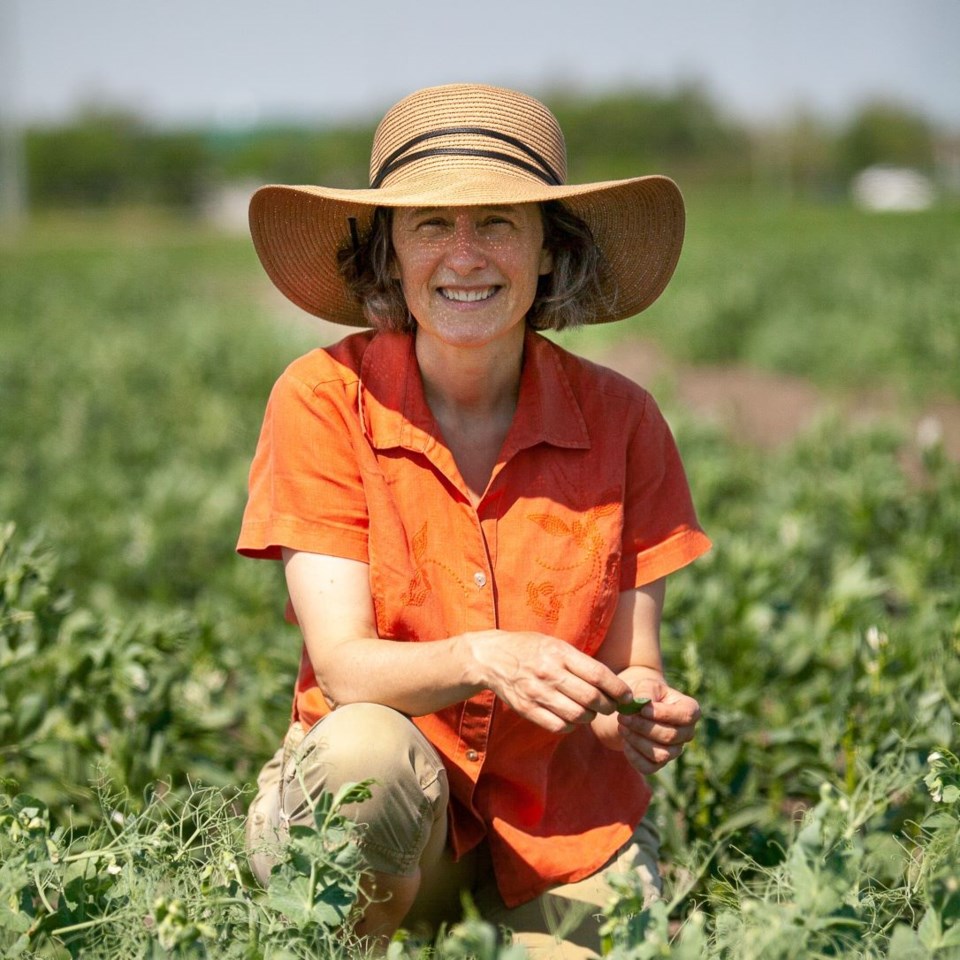SASKATOON – Root rot in pulse crops has grown to be a devastating issue for growers across Saskatchewan and Western Canada, so a team of University of Saskatchewan (USask) researchers and colleagues at Agriculture and Agri-Food Canada (AAFC) and the National Research Council (NRC) led by Dr. Sabine Banniza (PhD) of USask’s Crop Development Centre (CDC) is comprehensively searching for ways to beat it.
“We try to have a good balance with solutions that farmers can use now, but then also by generating knowledge feeding into future solutions,” Banniza said.
Banniza, a professor with the College of Agriculture and Bioresources and the CDC, and the Government of Saskatchewan Ministry of Agriculture Strategic Research Program Chair in Pulse Crop Pathology received more than $4.2 million from the Strategic Research Initiative (SRI) to uncover solutions for root rot in pea and lentil crops.
The funding from the SRI includes about $2.5 million contributed through the Sustainable Canadian Agricultural Partnership (Sustainable CAP) and around $1.7 million from industry partners. The Saskatchewan Pulse Growers, the Western Grains Research Foundation, the Alberta Pulse Growers Commission, Results Driven Agriculture Research, and the Manitoba Pulse and Soybean Growers all contributed to the project.
As Banniza puts it, root rot in peas and lentils has become so prevalent in Western Canada it has caused growers to stop planting the crops in some areas. Because of the importance of pea and lentil crops as a food source, as a nitrogen-fixing plant in crop rotations, and a cash crop for farmers, Banniza said tackling the root rot disease is of paramount importance.
“If you talk to growers and ask what is your biggest disease problem in pulse crops, they will almost all say root rot,” she said. “The longer and more often you grow a crop, the more these crops then select inadvertently for pathogens, and that is what we are witnessing here with the root rots.”
Banniza and her research team will be using the funding from the SRI to investigate solutions to root rot disease at every level – from genetics and breeding in the lab and in field nurseries, studying pathogen biology and host-pathogen interactions, to management strategies for growers in the field.
One of the cutting-edge strategies for in-field management of root rots that will be explored is called RNA interference – a method which involves directly targeting the root rot pathogens themselves at the genetic level to interfere with their ability to infect and spread in the plants.
Breeding peas and lentils for root rot resistance will be a cornerstone of this project and use of such root rot-resistant varieties will be an important and the least expensive tool for farmers. However, it takes time to develop new crop varieties with good disease resistance, so Banniza said RNA interference has the potential to be a powerful solution in the meantime.
“RNA interference is a novel approach to in-field disease management, which makes it very exciting and promising,” she said. “It could be a very, very potent method, but it’s very novel so we have to see how it works ... I’m quite excited about it because that is really thinking outside the box.”
Banniza and her team are highly appreciative of the funding provided by the Saskatchewan Ministry of Agriculture and the industry groups for such a large, focused and critical venture, and of the confidence they have put into the team and their home institutions with the CDC, USask, AAFC, and NRC to bring this collaborative project to fruition.
She said the strength of the SRI was how it encouraged and supported a multidisciplinary approach to the problem of root rot, allowing researchers to tackle this pervasive issue on so many fronts.
“Output from one sub-project feeds into another. There is certainly much, much more communication,” she said. “As you develop the proposal, sometimes lightbulbs go on and people say, ‘I hadn’t thought about it that way,’ and so I think that makes a project like this SRI much more productive and creative.”
The SRI and the Agriculture Development Fund (ADF) are supported through the Sustainable CAP, an investment of $3.5 billion over five years from federal, provincial and territorial governments, to support the agri-food and agri-product sectors across Canada. The Sustainable CAP includes $1 billion in federal programs and activities and a $2.5 billion commitment for programs designed by provinces and territories that are cost-shared 60 per cent by the federal government and 40 per cent by provincial/territorial governments.
— Submitted by USask Media Relations




